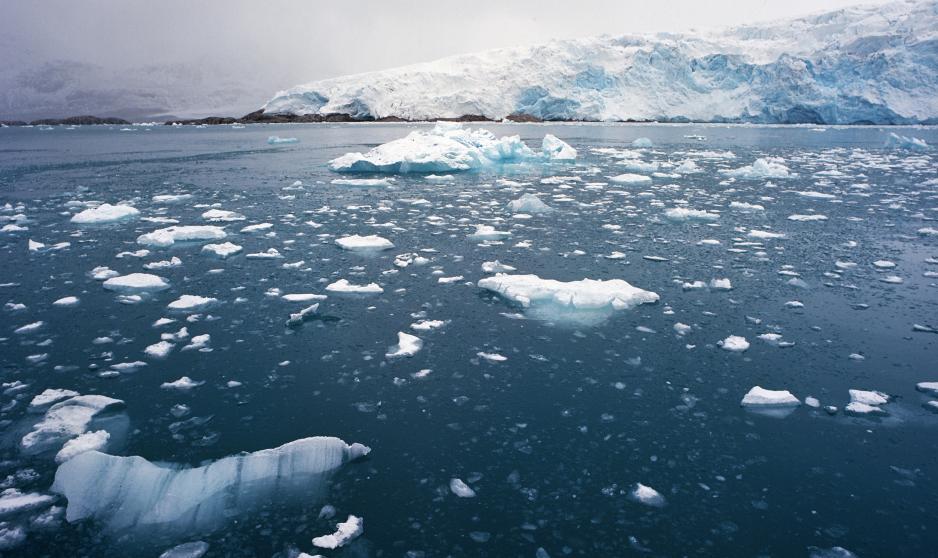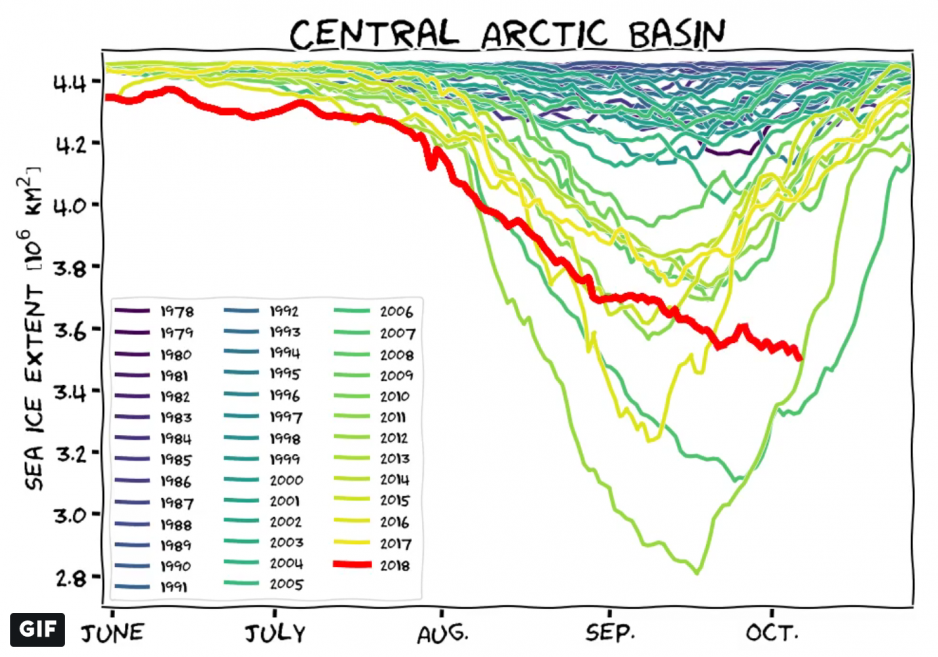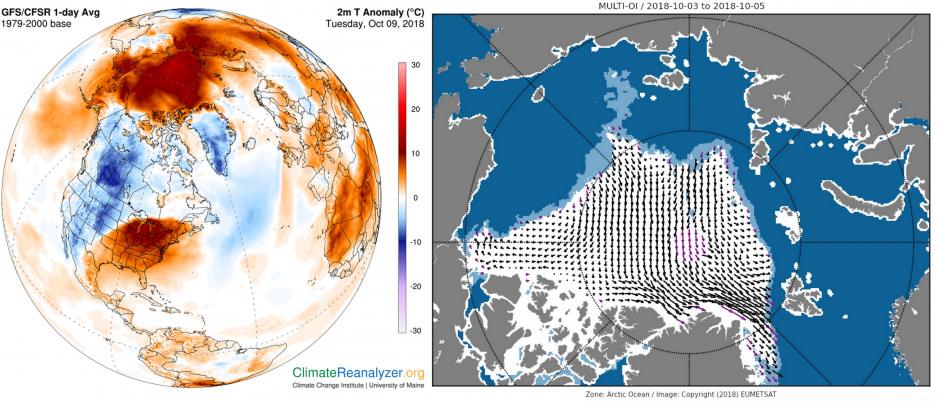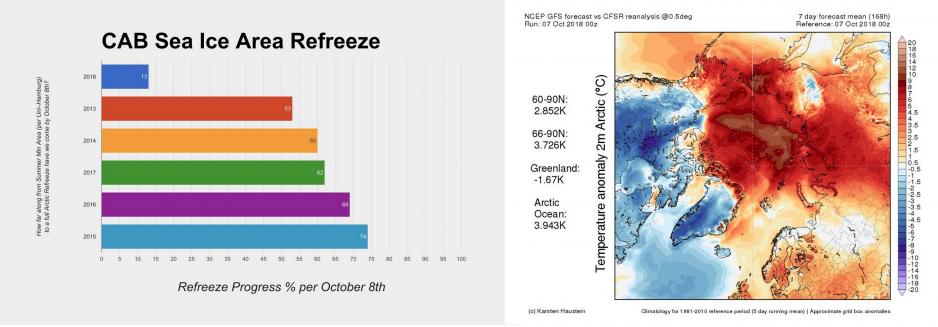Unprecedented Lack of Refreeze Across Arctic as Ice Continues to Melt

Ice extent across the Arctic Ocean reached its annual minimum about two weeks ago. At this point ice would normally be forming rapidly, especially in the center of the Arctic Ocean. However, ice coverage in the Central Arctic Basin, the largest part of the Arctic Ocean comprising around 4.5 million square kilometers, continues to decline puzzling climate scientists.
This region has never before experienced continued melting this late into fall. Even during the record-low years of 2007 and 2012 the center of the Arctic Ocean was freezing over rapidly by mid-October.
"In fact now ice extent in the Central Arctic Basin is second lowest for the day. Its slightly below the overall record year 2012. Only in the year 2007 there was less ice in the Central Arctic on this day of the year," says Lars Kaleschke from the Center of Marine and Atmospheric Research (ZMAW) at the University of Hamburg. About 500,000 square kilometers of ice coverage are missing – about the size of Sweden – compared to the previous five years.
What exactly this development means for Arctic sea ice later this winter remains unclear, but it’s another unsettling development in a region where climate change is happening at twice the rate of the rest of the world.
"It is still a bit too early to draw any conclusions for wintertime weather patterns in response to the current sea ice loss. However, Arctic climate change is happening now," says Zack Labe, climate scientists at the University of California, Irvine.

High winds and warm temperatures
There isn’t one single factor explaining the continued melting and lack of refreezing in the center of the Arctic. But above average temperatures and a sustained and powerful storm have affected the ice for the past week or so. Temperatures north of the Canadian archipelago were as much as 20 degrees Celsius above average.
"This type of weather is favorable for "warm" and dry conditions, which acts to reduce the rate of sea ice refreezing. The winds also helped to compact the sea ice edge along the western Arctic, which prevents sea ice extent from growing," explains Labe.
High winds prevent adhesion of newly formed ice, preventing it from becoming a solid and continuous surface. Ice that survived the summer melt season was pushed together around the northern shores of Greenland opening up more open water and reducing ice coverage.
Ocean temperatures are also well above normal explains Kaleschke. "The air temperatures are much lower above the sea ice surface than over the open ocean. The ocean has a much larger heat capacity than the atmosphere. Both ocean and atmosphere are warmer than usual."

This has resulted in a record-low rate of refreeze across the Arctic basin. While in the previous five years ice area had increased by as much as 74 percent in the weeks since the overall minimum, this year area has only increased by 13 percent since the annual minimum on September 23.
And there appears to be little reprieve for the Arctic at least for the coming week as regional weather forecasts show continued above-average temperatures.

Ice-free Arctic Looming
Over the past few years, the hardest hit against Arctic sea ice has not come during the summer months directly, but rather occurred during late Fall and early winter. The months between October and December have seen a number of record negative anomalies indicating that it becomes harder and harder for the ice to recover at the end of each summer.
While a multitude of factors determine the amount of melt during the following summer, delayed refreeze during the winter is the first strike against sea ice long before the next melt season begins in March. As a brand new study published by Springer and authored by Dirk Notz and Julienne Stroeve confirms, the Arctic is now well on as trajectory to a seasonally ice-free ocean. The researchers conclude that "the Arctic Ocean will become ice free during summer before mid-century unless greenhouse gas emissions are rapidly reduced." A sentiment echoed by the dire IPCC climate change report released earlier this week.
